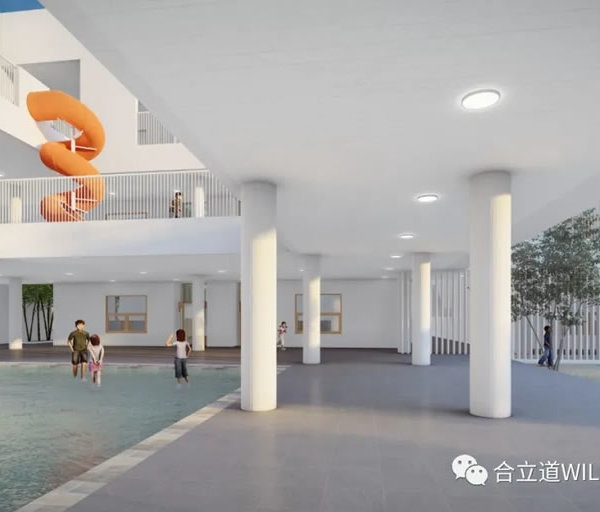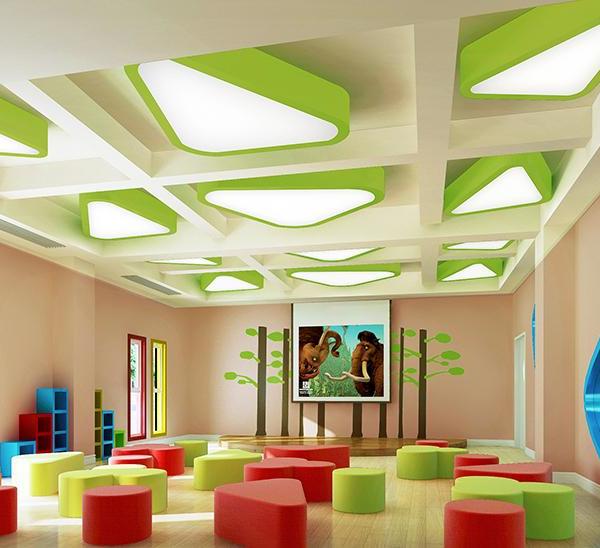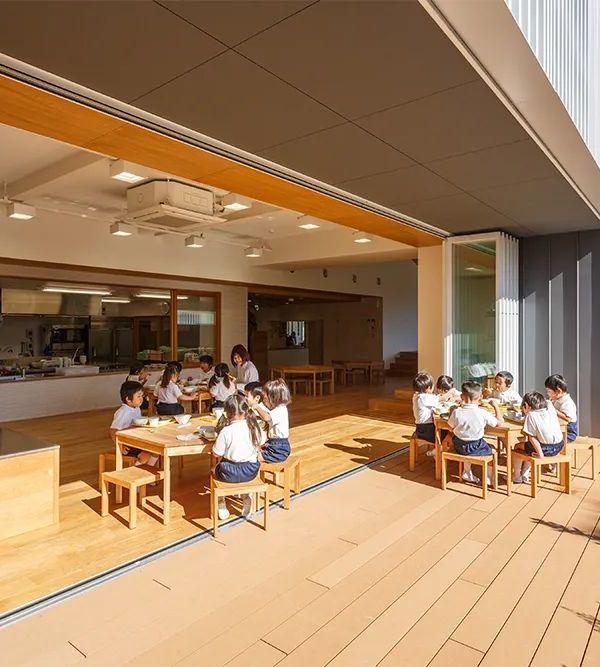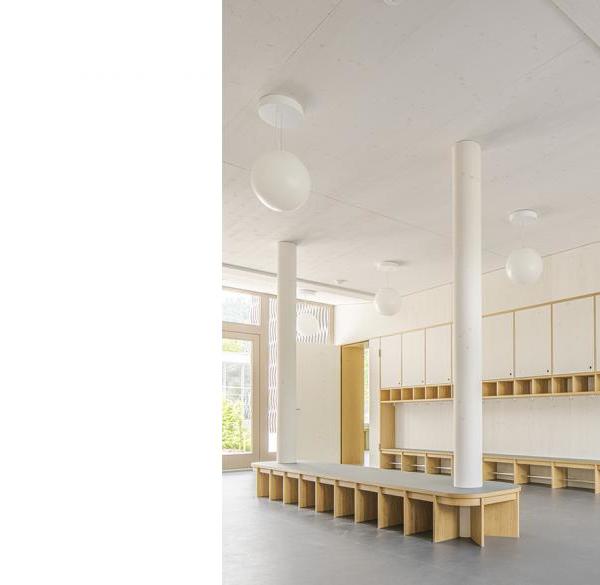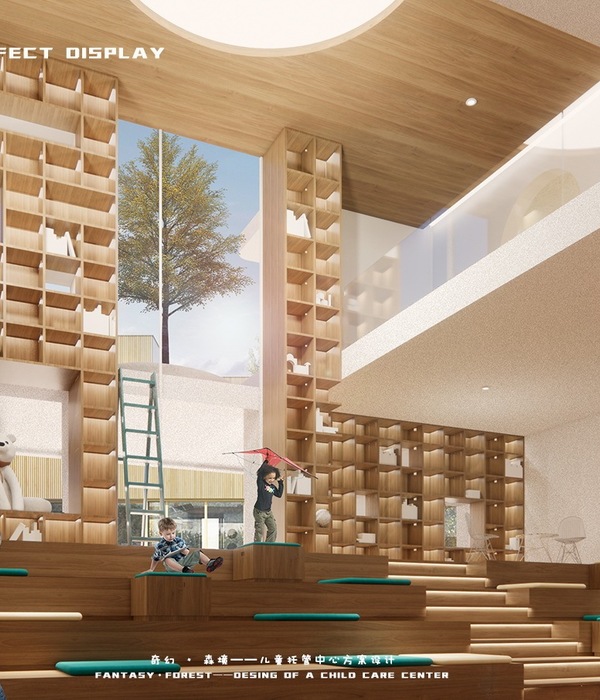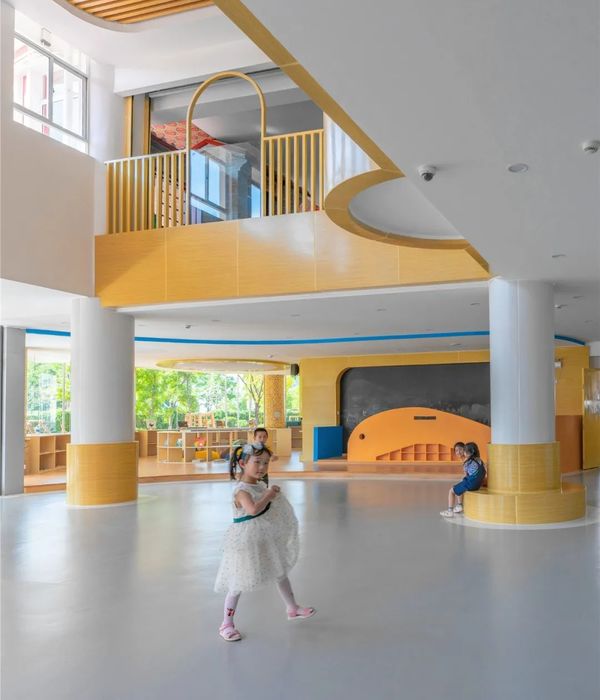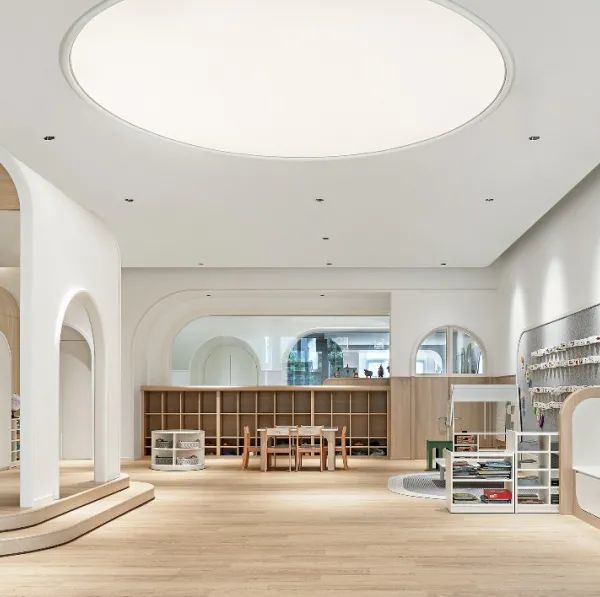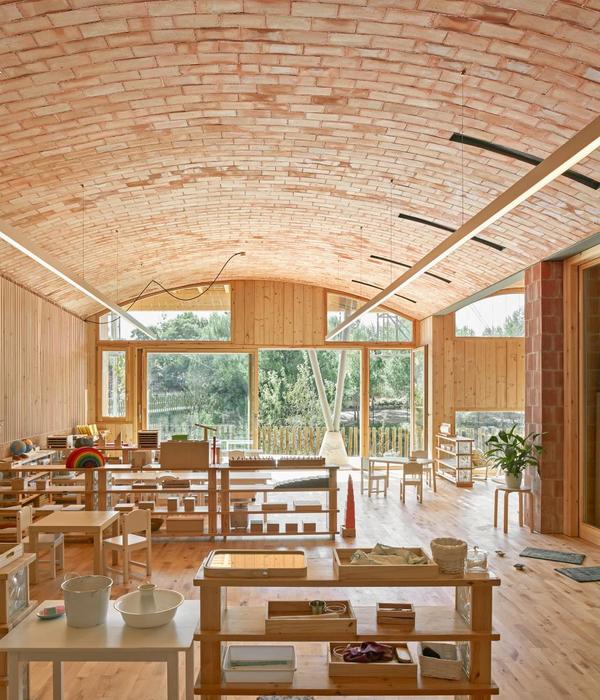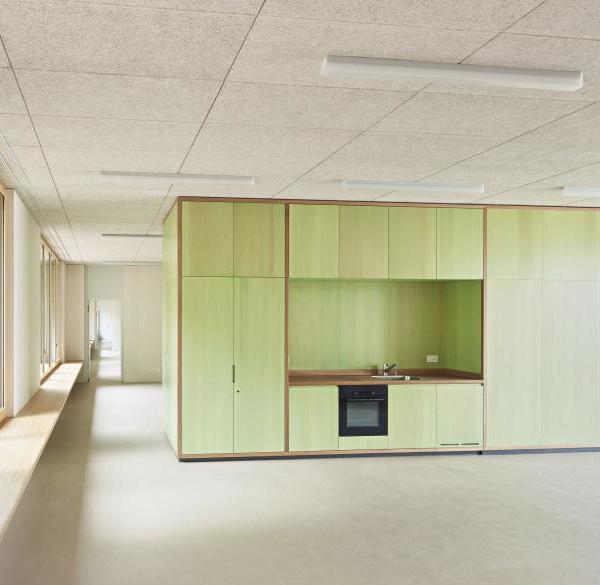Based on an open architecture competition, Jätkäsaari comprehensive school of 800 pupils in Helsinki is the latest evolution of contemporary Finnish schools and designed in accordance with Finland's new national curriculum, which emphasizes e.g. phenomenon-based and multidisciplinary learning.
The school is situated at the edge of the new development, facing the busy ferry terminal, with an open view to the Baltic Sea. lt is visible from far away, welcoming travelers to Helsinki. The school stands out in the cityscape and at the same time adapts to the surrounding urban structure by carefully thought-out placement, creating clear street spaces and a sheltered school yard. The spatial organization of the school emphasizes exploratory learning and doing things together.
The school facilities are characterized by spaciousness and visual connections between different spaces. There are no traditional classrooms; instead, the school is divided into open "home units", connected with each other via the central lobby. The modifiable space solution can be adapted to the future needs of teaching and offers an inspiring pedagogic learning platform which grows and develops alongside its users. The building offers open and flexible spaces that encourage children to learn and collaborate.
At the time of the competition, the world famous Finnish education system was in a process of transition. Jätkäsaari School is designed entirely in accordance with Finland's new national curriculum, which emphasizes phenomenon-based and multidisciplinary learning. ln the project new kinds of spatial solutions were studied for learning spaces to address the needs of today's educational requirements.
The design team worked closely with the school's future teachers. The architects developed further the spatial programme by listening to the pedagogical experts' wishes and needs and interpreting them into spaces. Also workshops with the future pupils were organized. The objective of The City of Helsinki is that new school buildings are sustainable and easy to maintain, with a lifespan of a minimum of 100 years. For guaranteeing high quality solutions and successful construction process, the constructor was taken onboard at an early stage.
Concrete plays an important role in the recognizable expression of the building. The facades on the second and third floor are white fibre-reinforced concrete which creates a varying pattern structured by windows and relief recesses, one window for each pupil. ln contrast to the clean white surface, the ground floor is clad in handmade brick. The floors are of dark Finnish granite. The overall colour scheme of the school is subdued, because an open learning space requires a calm background.
AII surface materials are durable and sound, such as concrete in floors and oak in wooden surfaces and fixed furniture. The grey concrete surfaces left on the stairwells counter-balance the light interior colours. Cast-in-situ staircases create a geometrically exciting space with top lighting through a skylight. The skylights of the atrium space incorporate concrete cones coated with an acoustic spray coating. The project was awarded with the Finnish Concrete Award of the Year in 2019.
{{item.text_origin}}

